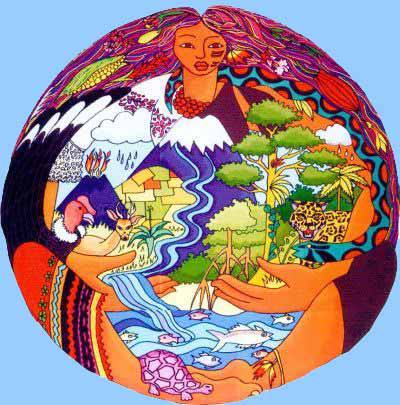INDIGENOUS AND MODERN KNOWLEDGE
All societies, pre-scientific and scientific strive to make sense of how the natural world behaves. this knowledge was based on observations. Science-based societies have tended to overuse the ecological systems, resulting the exhaustion and environmental degradatio. The knowledge and beliefs of indigenous societies accumulated over time about the relationship of living beings, with one another and with their environment, it is of great importance in the scientific world, and helps find ways of environmental conservation.
ENHANCING BIODIVERSITY
Working in the Ecuador portion of the Amazon forest has also reported that Runa Indian swiddens resemble agroforestry systems rather tan the slash-and-bum than merely results in temporary clearings in the forest canopy. Between 14 and 35% of this enhanced species diversity was attributed to direct planting and protection of secondary species. Runa agroforestry as a low-intensity succession manage-ment system which, nevertheless, alters forest composition and structure in the long run.
RESTORING BIODIVERSITY
Restoration of biodiversity in the landscape to protect local forests to encourage natural regeneration. Once enabled and assured participation in the production of more regenerated forest reserves. Government agency and Council are planning a serious stimulus to these local initiatives for the restoration of the productivity and biodiversity of degraded lands. The NWDB experiment in micro- to integrate this development of wastelands, attempts to recreate a community of diverse plants supplied by indigenous species and species Genas. plantation forests serve as supply.
CONSERVING BIODIVERSITY
That indigenous people are aware of a large variety of uses of local biodiversity including medical uses. Their knowledge of habitat preference, life story. Their knowledge are explicit and socially transmitted from an across generations. The indigenous knowledge base pertaining to conservation is no as explicit.
But in the case of fisheries of other industries they have: four kings of indigenous conservations practices are of particular relevance.
- Total protection to many individual biological communities including pool along rivers courses, ponds, meadows and forests.
- All individuals of certain species of plants and animals may be afforded total protection.
- Certain particularly vulnerable stages in the life history of an organism may be given special protection.
- Major events of resource harvest are often carried out as a group effort.
KNOWLEDGE, PRACTICE AND BELIEF
Joshi and Gadgil found a method that facilitates the ability to maximize crops bilógicos products and avoid the extinction of bilógicas species and indigenous retain their groves, other beliefs and their holy places that are considered characteristic of the conservation of stocks indigenous people.
